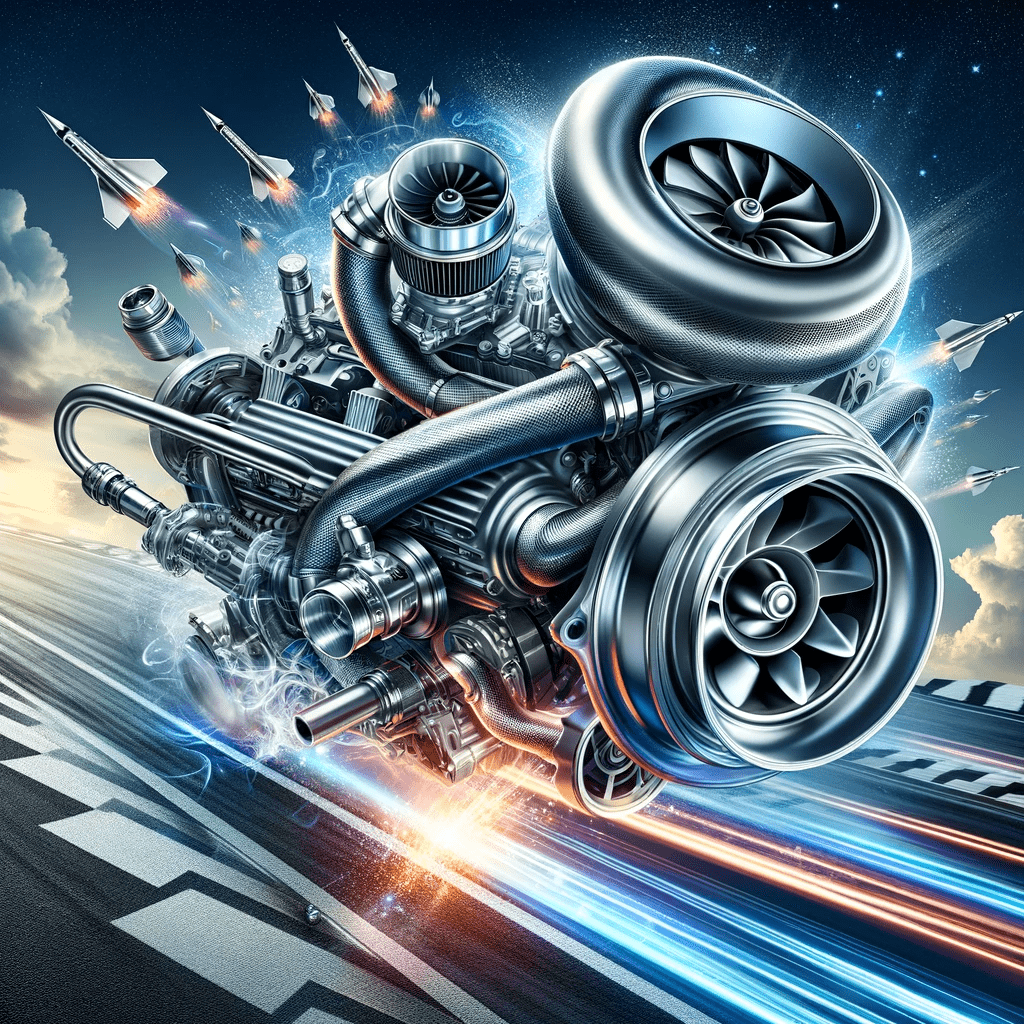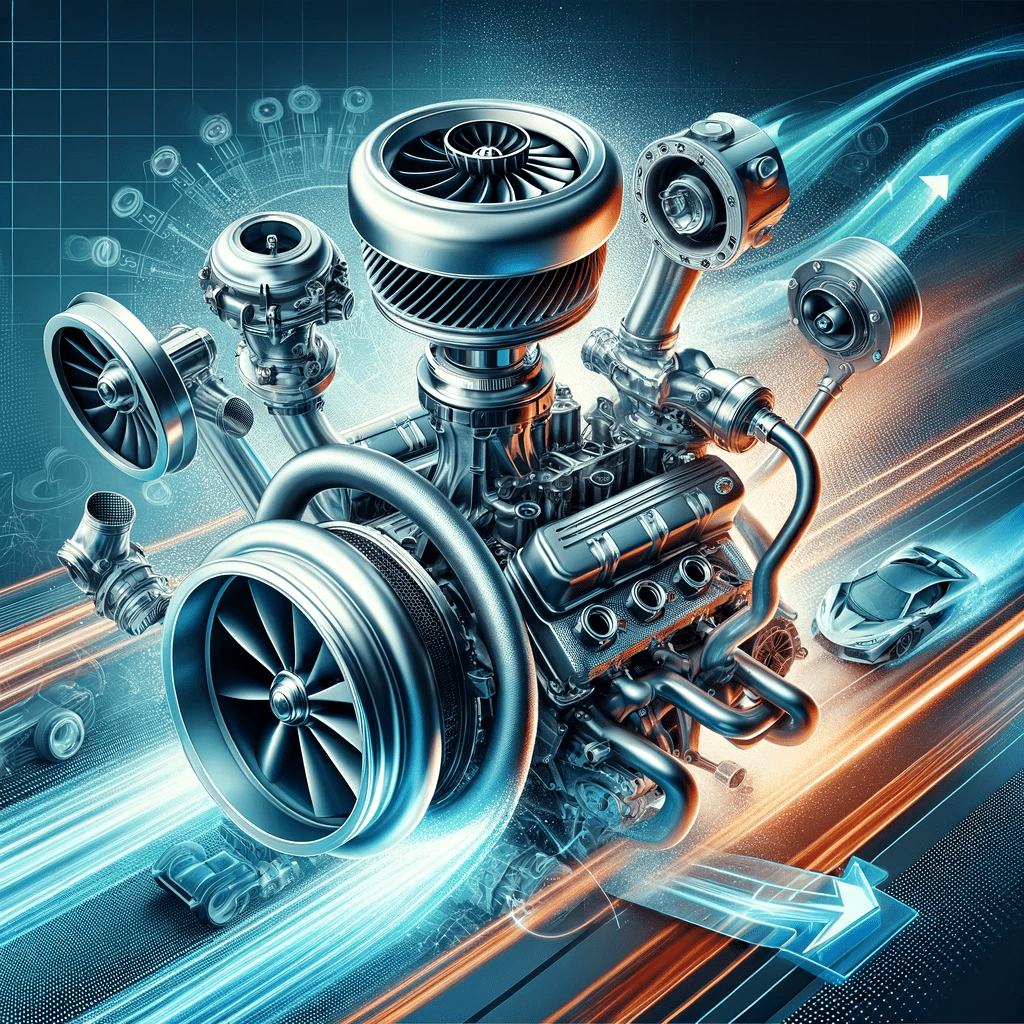Key Takeaways
| Benefit | Description | Impact on Performance |
|---|---|---|
| Increased Power | Forced induction compresses air entering the engine, leading to more powerful combustion. | Significant increase in horsepower and torque. |
| Efficiency | Engines with forced induction can be smaller in size but still produce the same power as larger naturally-aspirated engines. | Better fuel economy and reduced emissions. |
| Upgrade Potential | Turbochargers and superchargers can be upgraded for even greater performance. | Customizable power output for various performance needs. |
| Responsiveness | Improved throttle response due to increased air density. | Faster acceleration and better engine response. |
| Longevity | With proper maintenance, forced induction can lead to a longer engine lifespan. | Enhanced engine performance over time with reduced wear. |
Forced induction systems, like turbochargers and superchargers, are a game-changer in automotive performance. These systems compress the air flowing into the engine, allowing for a denser charge of air in the combustion chamber. More air means more fuel can be added, and that leads to a bigger bang i.e., more power. It’s not just about the raw power, though; there are several other benefits to consider.
Increased Power and Torque
Forced induction is synonymous with a significant boost in power and torque. Vehicles with turbocharged engines often see a considerable increase in horsepower, translating to quicker acceleration and a better overall driving experience.
Improved Fuel Efficiency
By forcing more air into the engine, you can achieve the same—or even greater—power output from a smaller displacement engine. This can lead to improved fuel efficiency, which is a boon for both your wallet and the environment. Learn how this ties into overall engine efficiency by checking out the benefits of a cold air intake system.
Tuning and Upgradability

A turbocharger or supercharger offers vast tuning potential. For example, with ECU remapping, the performance of a forced induction engine can be fine-tuned to suit your driving style or even boosted beyond factory settings for high-performance applications.
Engine Longevity
When maintained properly, a forced induction system can contribute to engine longevity. The key is ensuring that the engine is running within safe parameters to prevent excessive wear or damage. Strategies for enhancing engine longevity are crucial for maintaining that added performance over the life of the vehicle.
Throttle Response and Engine Efficiency
Forced induction improves throttle response, making the car feel more responsive to driver inputs. Additionally, it can contribute to better engine efficiency by ensuring that the air-fuel mixture is optimized for combustion. This is closely tied to the advancements in fuel injection systems.
Real-World Examples
Imagine a small 2.0-liter engine in a compact sports car. With the addition of a turbocharger, this engine can outperform a larger 3.5-liter naturally aspirated engine in terms of power and torque. This is not just theory; many modern sports cars use this exact setup for optimal performance.

The Downsides
Despite the numerous benefits, there are some considerations before going down the forced induction route:
- Complexity and Cost: Turbochargers and superchargers add complexity to an engine. This can lead to higher maintenance costs and potentially more things that can go wrong.
- Lag: Turbo lag is a known issue where there’s a delay between the driver’s request for power and the turbo’s delivery of that power.
- Durability: If not properly installed and maintained, forced induction can lead to increased engine wear.
Conclusion on Benefits of forced induction
Forced induction offers a compelling boost to engine performance, efficiency, and driving pleasure. By understanding both the pros and cons, you can make an informed decision about whether it’s the right choice for your vehicle. For more detailed information on engine performance upgrades, basics of engine upgrades 101 is a great resource.
Remember, while forced induction can transform your ride, it’s essential to consider the entire system, including potential tuning chips, to ensure you’re getting the most reliable and satisfying increase in performance.
Whether you’re looking to merely pep up your daily driver or fully transform your car into a track beast, forced induction can be a path to achieving those goals. Just be sure to consult with performance experts and use high-quality components to get the most out of your upgrade.
Benefits of forced induction Q&A Section
Q1: What is forced induction?
A1: Forced induction is a method of increasing an engine’s power output by compressing the air that flows into the engine, allowing it to “force” more air, and consequently more fuel, into the combustion chamber than would be possible naturally.
Q2: How does forced induction improve engine performance?
A2: By compressing air, the engine can mix more fuel with it, leading to a more powerful explosion in each cylinder. This increases the horsepower and torque output of the engine, leading to better acceleration and overall performance.
Q3: What are the main types of forced induction systems?
A3: The two primary types of forced induction systems are turbochargers and superchargers. Both compress air into the engine but are powered differently. Turbochargers use the engine’s exhaust gases to spin a turbine, while superchargers are mechanically driven by the engine’s crankshaft.
Q4: Can forced induction improve fuel economy?
A4: Yes, when designed and tuned correctly, forced induction can improve fuel economy. Smaller, turbocharged engines can provide the power of larger engines with better fuel efficiency, thanks to more effective use of the air-fuel mixture and less wasted fuel.
Q5: Is forced induction reliable?
A5: Forced induction systems are generally reliable when maintained correctly. However, they do add complexity to an engine’s operation, which can introduce potential points of failure if not properly installed, or maintained, or if the engine is pushed beyond its limits without supporting upgrades.
Q6: What maintenance considerations are there for forced induction systems?
A6: Regular checks are crucial, including inspecting for leaks, ensuring that all connections are secure and that the turbo or supercharger is in good working order. It’s also important to use high-quality oil and fuel to prevent build-up and clogs that can affect performance.
Q7: Can you add forced induction to any car?
A7: Technically, yes, but it’s not always practical or cost-effective. The car’s engine and components must be able to handle the increased pressure and power output. It’s often best to consult with a performance specialist before undertaking such a modification.
Q8: Are there any downsides to forced induction?
A8: Potential downsides include increased strain on the engine, the possibility of turbo lag, higher initial costs, and potentially higher maintenance requirements. It’s vital to weigh these against the performance benefits.
Q9: How do I choose between a turbocharger and a supercharger?
A9: This choice depends on your performance goals, budget, and preference for power delivery. Turbochargers can offer more efficiency and power but may suffer from lag. Superchargers provide instant power but can be less fuel-efficient. Research and expert advice can help decide which is best for you.
Q10: What is the impact of forced induction on engine longevity?
A10: If a forced induction system is properly installed and the engine is tuned to accommodate the increased power, it should not negatively impact longevity. Regular maintenance is essential, and modifications should be made to ensure the engine’s internals can handle the increased stress.
For more insights and guidance on enhancing your engine, explore how camshaft modifications can further improve engine performance, especially when paired with forced induction.